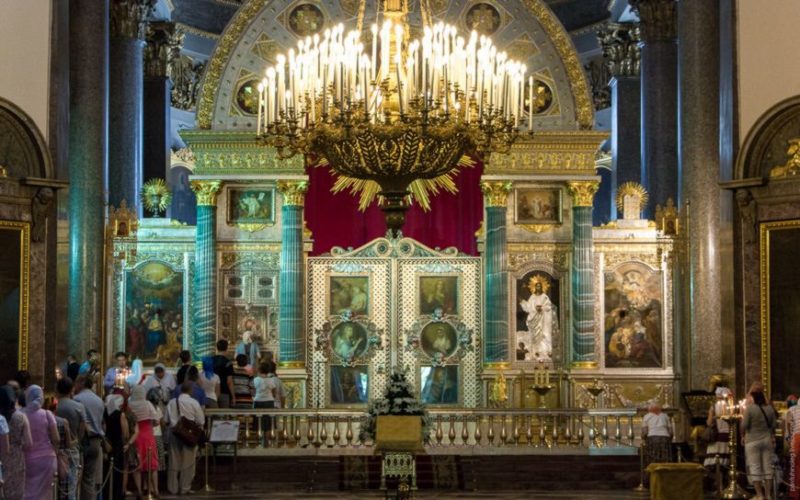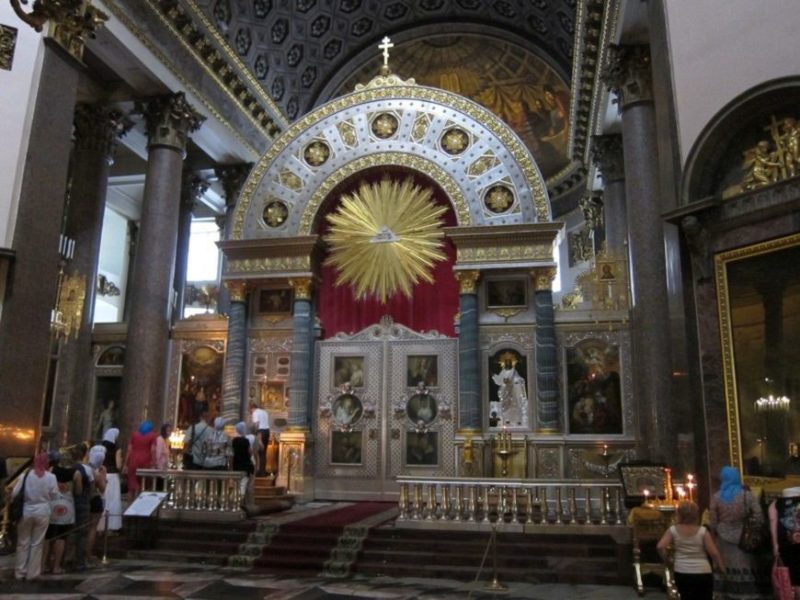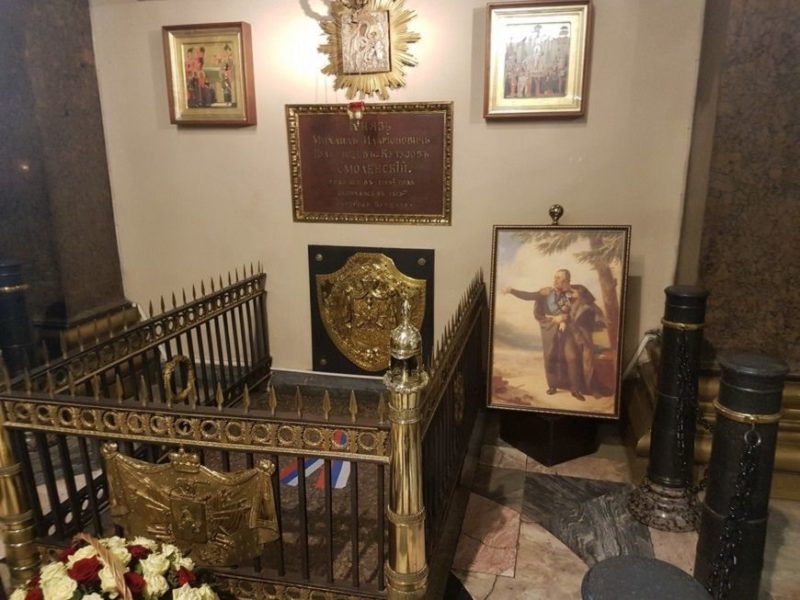Kazan Cathedral in St. Petersburg
Kazan Cathedral in St. Petersburg - one of the largest active temples of the city. Its main shrine is the miraculous icon, thanks to which the temple was named the Cathedral of the Kazan Icon of the Mother of God.
The parish regularly participates in church holidays and religious processions. Today, there is a library, an art school, a lecture center, a Sunday school for children and adults, an Orthodox faith museum, a youth club, the Victory Folk Choir and a social department. The cultural and educational center of the Kazan Cathedral in St. Petersburg conducts active educational and missionary activities.
Miraculous Icon
The Kazan Icon of the Mother of God, one of the most revered in the whole world, was revealed in Kazan on July 8/21, 1579. This holiday is celebrated annually by believers throughout Russia.
According to legend, after a terrible fire in Kazan, the ten-year-old Matrona dreamed of the Mother of God, who indicated the location of the icon, where she was found buried to a depth of about a meter.
Before moving to St. Petersburg, the icon was in the Kazan Monastery of the Most Holy Theotokos, founded by Ivan the Terrible ( Ivan Grozny) in 1579.
The icon is related to the type of Odigitria - the Virgin Mary is depicted on it in the front with the baby Jesus Christ in her arms. Because of its value and precious of the image, the icon of the Mother of God was repeatedly subjected to thefts and attempts at destruction. To prevent the loss was made many copies.
The history of the construction of the Kazan Cathedral in St. Petersburg
The architect of the cathedral is Andrei Nikiforovich Voronikhin. The construction of the temple lasted 10 years from 1801 to 1811. Construction was carried out on Nevsky Prospect, where previously there was a small church of the Nativity of the Virgin.
The new church began to be built by decree of Emperor Paul I, who wanted to create a cathedral for the miraculous icon of the Kazan Mother of God. The church was built exclusively from domestic, mainly Karelian materials. Masons, blacksmiths and carpenters were serfs. The construction of the Kazan Cathedral was the beginning of the opening of the school of craftsmanship of engineers, architects and city planners.
Above the creation of the temple worked several thousand workers. Despite the lack of technology and extremely difficult working conditions, the largest cathedral of St. Petersburg was built. Its height reaches 71.5 meters, and the huge columns, weighing up to 30 tons each, amaze with their greatness.
The opening of the temple took place on the eve of the Patriotic War of 1812. Conquered French banners and standards came here, some still hang on the walls of the cathedral, although most of them are kept in Moscow. In the north-eastern part of the temple is the grave of M. I. Kutuzov - the famous commander, commander-in-chief of the Russian army during the Patriotic War of 1812. Since the history of the church is closely connected with the war, the cathedral received the title of a monument to Russian military glory.
Description of the Cathedral
Emperor Paul I wanted to build a cathedral similar to St. Peter’s Cathedral in Rome. Therefore, he chose a project that best met this requirement. Kazan Cathedral in St. Petersburg is made in the Empire style, in the form of a classical Roman basilica and a cross-domed church.
The length of the cathedral from west to east is 72.5 meters, and from north to south - 57 meters. The width from the dome to the western doors is about 30 meters. The colonnade of the cathedral consists of 126 columns: 94 from the side of Nevsky Prospect, 20 from the south and 12 from the west.
The interior is divided by columns into three naves. The central nave is the largest, it is covered by a semi-cylindrical vault. The floor of the temple is laid out with a complex mosaic of multi-colored marble and quartzite, which makes the Kazan Cathedral practically a museum of natural stone. The only material of "non-Russian" origin was French alabaster, from which floral rosettes were made on the ceiling.
The cross of the cathedral is located on the dome, which is supported by four pylons. In its drum 16 windows are cut, through which sunlight penetrates into the temple. The diameter of the dome is over 17 meters, which makes the Kazan Cathedral one of the tallest dome buildings.
The main accents of the external decoration of the cathedral are bronze doors, which are a copy of the famous Battistero Temple in Florence.
The best Russian masters - Pimenov, Martos, Ekimov, Gordeyev, Prokofiev and others worked on sculptures and bas-reliefs to decorate the cathedral. The painting of the temple, performed in an academic style, with clear imitation of the masters of the Renaissance. The most famous painting is “The Taking of the Virgin to Heaven” by Karl Bryullov. Kazan Cathedral in St. Petersburg has become a vivid example of European art, it harmoniously combines architecture, sculpture and painting.
It may also be interesting
- How to travel in Saint Petersburg without living your home
- Four of the ten best restaurants in the country are in St. Petersburg
- The first Holocaust museum in St. Petersburg
- A scientist from St. Petersburg created the biochronicle of Peter the Great.
- 10 interesting facts about Saint-Petersburg streets





